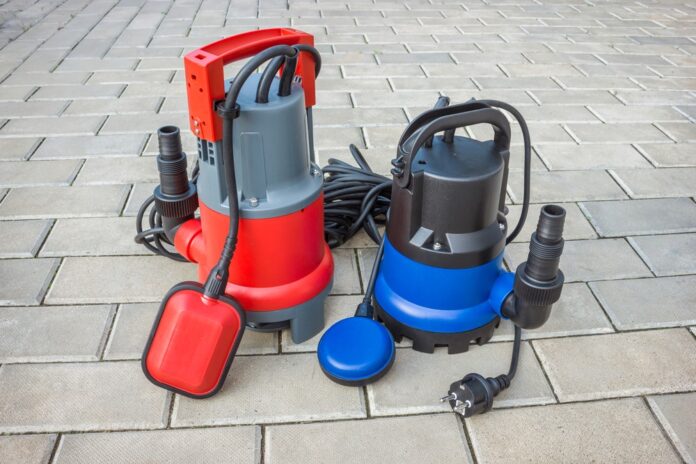Submersible pumps! A great helping tool for everyday life and fascinating too. If you’ve ever wondered about the electricity consumption of these submerged workhorses, you’re in the right place. Submersible pumps are widely used for various applications, from agricultural irrigation to domestic water supply, and understanding their energy usage is crucial for optimizing their performance and minimizing costs. In this article, we will delve into how much electricity a submersible pump uses, exploring the factors that affect its energy consumption, the different types of submersible pumps, and practical tips for optimizing its electricity usage. So let’s dive in and shed some light on this fascinating topic.
How Much Electricity Does a Submersible Pump Use:
A submersible pump’s electricity depends on several factors, including its power rating, pumping capacity, flow rate, water depth, lift height, pump efficiency, motor efficiency, and overall system design. Higher power ratings and horsepower typically result in higher energy consumption, as do larger pumping capacities and flow rates. Deeper water sources or higher lift heights also require more energy to overcome gravity. Pump and motor efficiency play a significant role, with higher efficiency resulting in lower energy consumption. Other factors, such as the condition of pipes and hoses, quality of components, and maintenance practices, also impact energy usage. To determine the exact electricity usage of a submersible pump, it’s essential to consider all these factors and calculate the energy consumption based on the specific specifications of the pump and the pumping system.
Factors that Affect Submersible Pump Energy Consumption:
Submersible pumps are popular for various applications, from supplying water for agricultural irrigation to draining flooded areas and understanding factors that can impact the energy usage of submersible pumps.
Power Rating and Horsepower:
A submersible pump’s power rating and horsepower are important determinants of its energy consumption. Generally, higher power ratings and horsepower indicate a more powerful pump that can handle higher flow rates and lift heights. However, higher power ratings and horsepower also typically result in higher energy consumption, as the pump requires more power. Therefore, it’s essential to choose a pump with an appropriate power rating and horsepower that matches the requirements of your specific application to avoid unnecessary energy waste.
Pumping Capacity and Flow Rate:
A submersible pump’s pumping capacity and flow rate, which determine the amount of water it can move in a given time, also affect its energy consumption. Pumps with higher pumping capacities and flow rates require more energy to move larger volumes of water. Therefore, selecting a submersible pump with an appropriate pumping capacity and flow rate that matches your specific water pumping needs is crucial, as oversized pumps can consume more energy than necessary.
Water Depth and Lift Height:
The depth of the water source and the height to which the pump needs to lift water, also known as the lift height, are crucial factors that impact the energy consumption of a submersible pump. The deeper the water source or, the higher the lift height, the more work the pump has to do to move water against gravity. This results in increased energy consumption. It’s essential to consider the water depth and lift height when choosing a submersible pump, as pumps specifically designed for these conditions can operate more efficiently and save energy costs.
Pump Efficiency and Motor Efficiency:
Pump efficiency refers to how effectively the pump converts electrical power into hydraulic power to move water. Motor efficiency refers to how effectively the motor converts electrical power into mechanical power to drive the pump. Higher pump and motor efficiency result in lower energy consumption, as less power is wasted as heat, and more emphasis is utilized for actual pumping. Therefore, when selecting a submersible pump, look for models with higher pump and motor efficiencies to ensure optimal energy usage.
Other Factors:
Apart from the above factors, other factors can impact the energy consumption of submersible pumps. These may include the condition and diameter of the pipes and hoses used in the pumping system, the quality of the pump and motor components, and the overall system design and installation. Proper maintenance, regular cleaning, and using high-quality components can help optimize the energy usage of submersible pumps and minimize energy waste.
How to Calculate Submersible Pump Electricity Usage:
Calculating the electricity usage of a submersible pump involves several steps:
- Gather information on the pump’s power rating, capacity, flow rate, water depth, and lift height.
- Determine the pump and motor efficiencies, typically found in the pump’s specifications or by consulting the manufacturer.
- Multiply the pump’s power rating by the motor efficiency to calculate the practical power input.
- Multiply the practical power input by the pump efficiency to determine the hydraulic power output.
- Consider the operating hours of the pump and multiply the hydraulic power output by the working hours to estimate the total energy consumption.
It’s important to note that this is a rough estimate, and energy usage may vary depending on system design, pipe diameter, and maintenance practices. Consulting with a qualified professional can provide more accurate calculations for a specific submersible pump.
Final Thought:
In conclusion, understanding the factors that affect submersible pump energy consumption is essential for efficient operation and effective energy management. Elements play a role in determining how much electricity a submersible pump uses. Optimizing energy consumption and reducing electricity costs is possible by considering these factors and accurately calculating the energy usage based on the specific pump and system specifications. Proper system design, regular maintenance, and energy usage monitoring can also contribute to more sustainable and environmentally friendly pump operation. Being mindful of the energy consumption of submersible pumps can help ensure their efficient and effective performance in various applications while minimizing their environmental impact.
